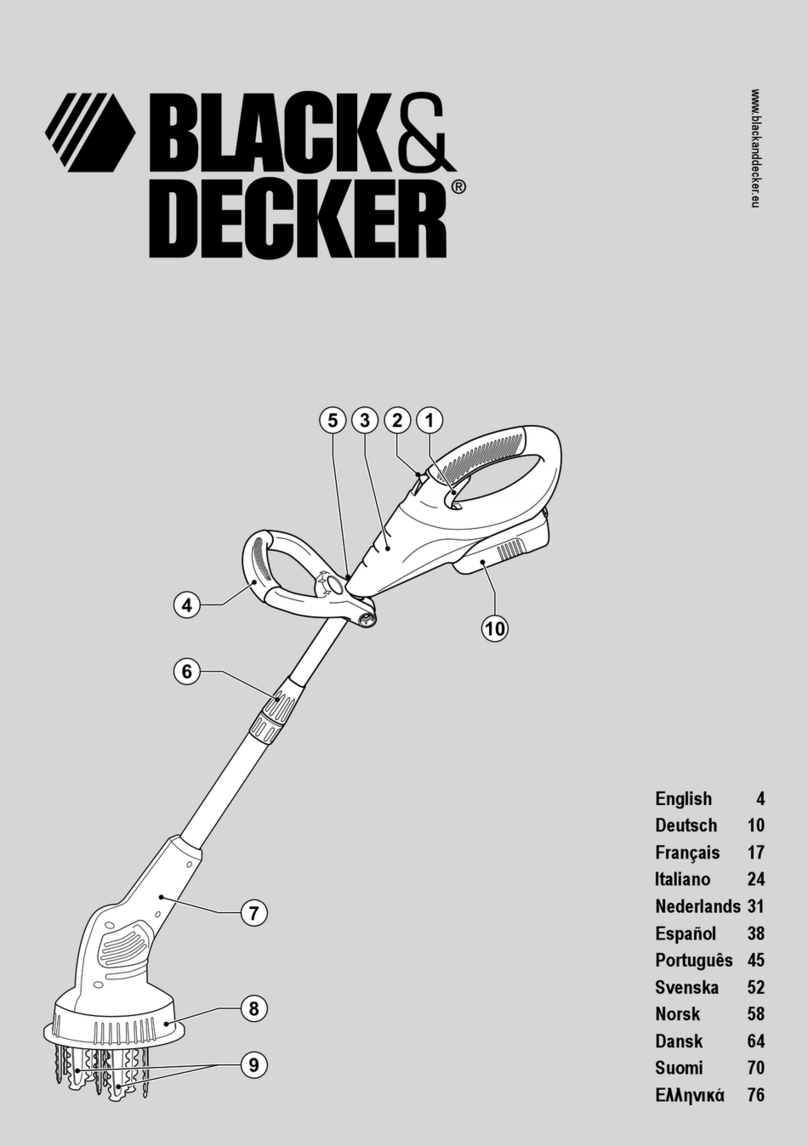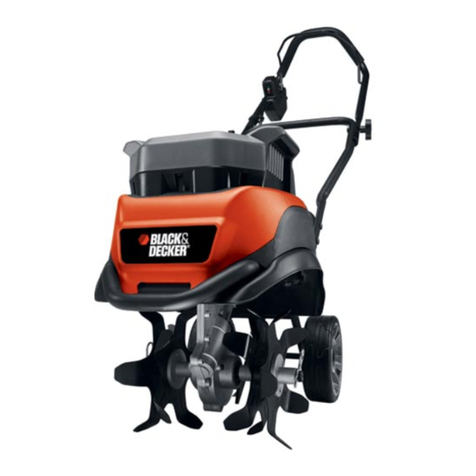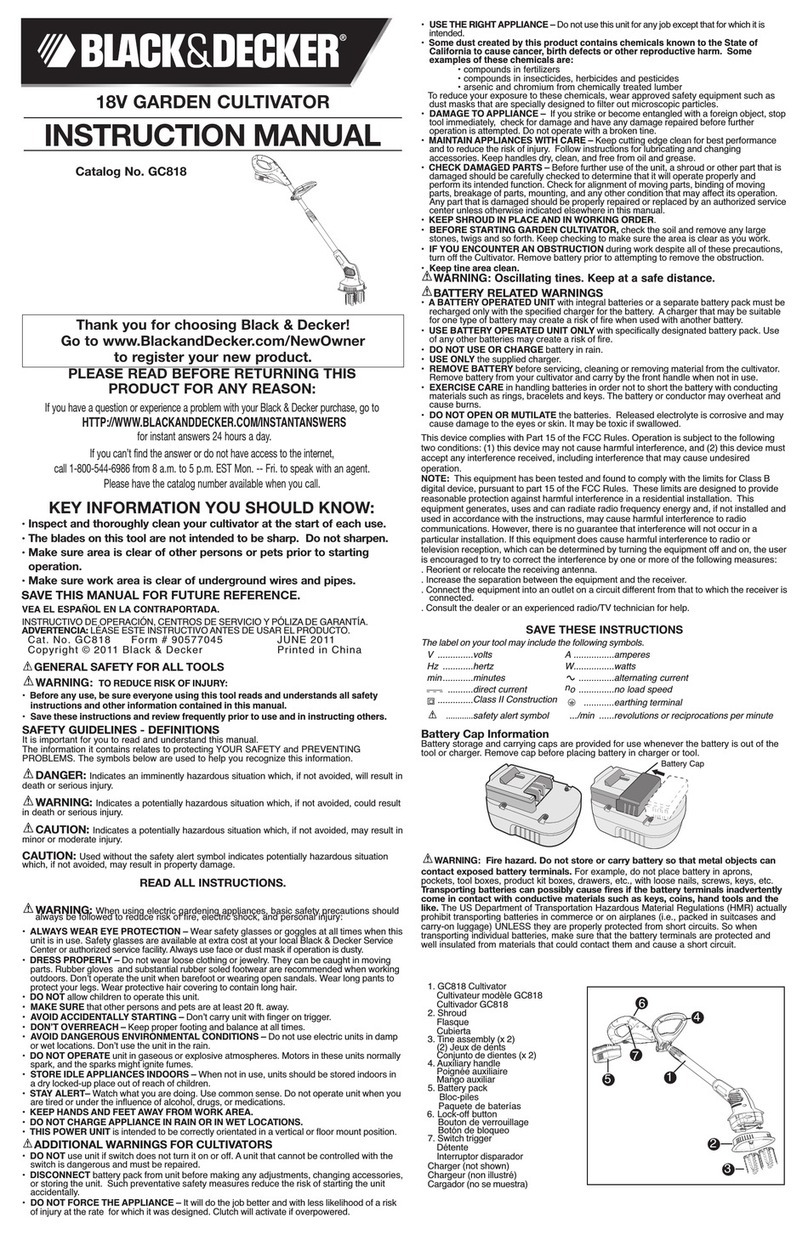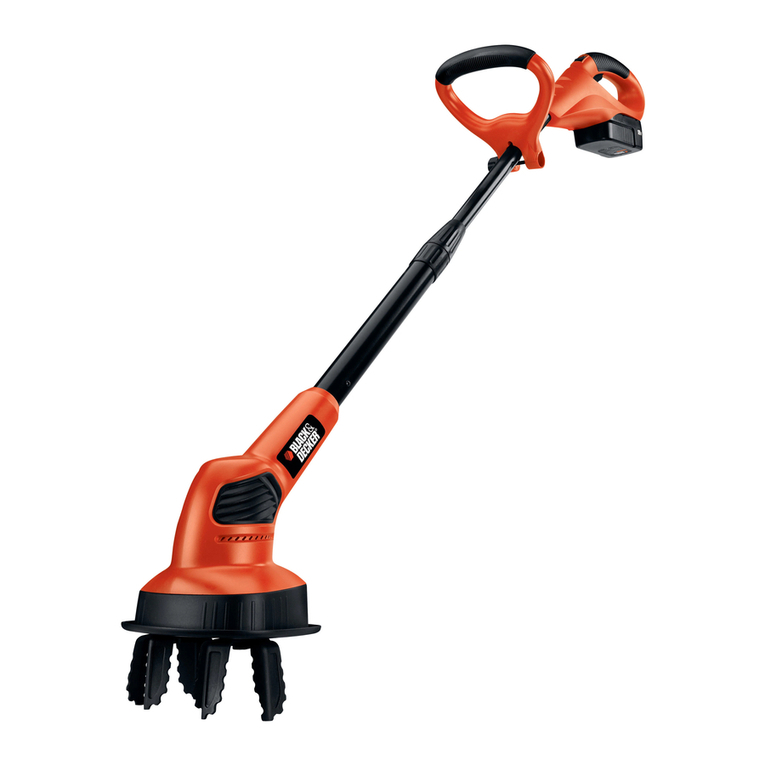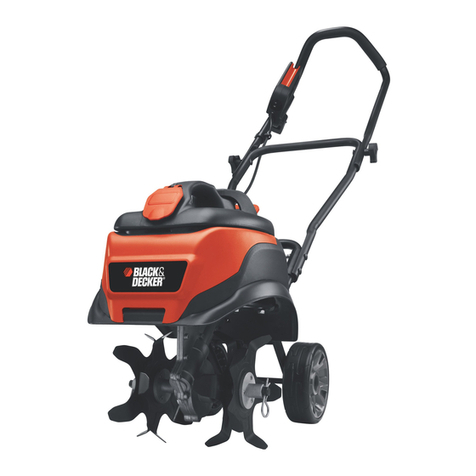3
• STAY ALERT– Watch what you are doing. Use common sense. Do
not operate unit when you are tired or under the influence of
alcohol, drugs, or medications.
• KEEP ANDS AND FEET AWAY FROM WORK AREA.
• DO NOT C ARGE APPLIANCE IN RAIN OR IN WET
LOCATIONS.
• T IS POWER UNIT is intended to be correctly orientated in a
vertical or floor mount position.
ADDITIONAL WARNINGS FOR CULTIVATORS
• DO NOT use unit if switch does not turn it on or off. A unit that
cannot be controlled with the switch is dangerous and must be
repaired.
• DISCONNECT battery pack from unit before making any
adjustments, changing accessories, or storing the unit. Such
preventative safety measures reduce the risk of starting the unit
accidentally.
• DO NOT FORCE T E APPLIANCE – It will do the job better and
with less likelihood of a risk of injury at the rate for which it was
designed. Clutch will activate if overpowered.
• USE T E RIG T APPLIANCE – Do not use this unit for any job
except that for which it is intended.
WARNING: Some dust created by this product contains
chemicals known to the State of California to cause cancer,
birth defects or other reproductive harm. Some examples of
these chemicals are:
• compounds in fertilizers
• compounds in insecticides, herbicides and pesticides
• arsenic and chromium from chemically treated lumber
To reduce your exposure to these chemicals, wear approved
safety equipment such as dust masks that are specially designed
to filter out microscopic particles.
• DAMAGE TO APPLIANCE – If you strike or become entangled
with a foreign object, stop tool immediately, check for damage and
have any damage repaired before further operation is attempted.
Do not operate with a broken tine.
• MAINTAIN APPLIANCES WIT CARE – Keep cutting edge clean
for best performance and to reduce the risk of injury. Follow
instructions for lubricating and changing accessories. Keep handles
dry, clean, and free from oil and grease.
• C ECK DAMAGED PARTS – Before further use of the unit, a
shroud or other part that is damaged should be carefully checked to
determine that it will operate properly and perform its intended
function. Check for alignment of moving parts, binding of moving
parts, breakage of parts, mounting, and any other condition that
may affect its operation. Any part that is damaged should be
properly repaired or replaced by an authorized service center
unless otherwise indicated elsewhere in this manual.
• KEEP S ROUD IN PLACE AND IN WORKING ORDER.
• BEFORE STARTING GARDEN CULTIVATOR, check the soil and
remove any large stones, twigs and so forth. Keep checking to
make sure the area is clear as you work.
• IF YOU ENCOUNTER AN OBSTRUCTION during work despite all
of these precautions, turn off the Cultivator. Remove battery prior
to attempting to remove the obstruction.
• Keep tine area clean.
WARNING: Oscillating tines. Keep at a safe distance.
BATTERY RELATED WARNINGS
• A BATTERY OPERATED UNIT with integral batteries or a
separate battery pack must be recharged only with the specified
charger for the battery. A charger that may be suitable for one type
of battery may create a risk of fire when used with another battery.
• USE BATTERY OPERATED UNIT ONLY with specifically
designated battery pack. Use of any other batteries may create a
risk of fire.
•DO NOT USE OR C ARGE battery in rain.
•USE ONLY the supplied charger.
•REMOVE BATTERY before servicing, cleaning or removing
material from the cultivator. Remove battery from your cultivator
and carry by the front handle when not in use.
• EXERCISE CARE in handling batteries in order not to short the
battery with conducting materials such as rings, bracelets and
keys. The battery or conductor may overheat and cause burns.
